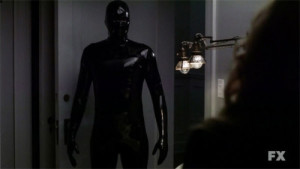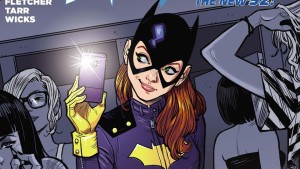Recently, the news broke that the 1988 one-shot Batman arc known as “The Killing Joke” has been optioned for film by Warner Brothers. Sensational enough on its own, the news becomes downright confusing when you add the fact that the WB wants to make it R-rated. Here is my advice to the folks in charge of this project.
Stop Telling Stories About the Joker
The Joker as a character has been told and retold up, down and sideways. He’s swung from campy and gimmicky to psychotically killing when it’s ‘funny’ and back again. His portrayal has become murderous or insane for what seems like pure shock value. This trend in storytelling has moved in an increasingly disturbing direction, which has, as we saw in the case of Heath Ledger, become downright dangerous for the actors who portray the character. Not only have we already seen the Joker in films, television series, and video games at varying levels of seriousness and body count, but we are already promised yet another, grittier iteration from Jared Leto in the upcoming Suicide Squad film. It’s enough. If “The Killing Joke” is translated to film the same way it was told in comic format, it will be yet another Joker tale with disturbing violence and an added dose of misogyny. For this story to be original and interesting, it will have to be told in a VERY different way.
Stop Hurting Women to Make a Point About Men
Women are constantly being tortured and killed in media to bring pain or motivation to either the male lead or an associated male character. There is a term for it in comic spheres dubbed by writer Gail Simone called “Women in Refrigerators.” The term gets its name from the Green Lantern story arc where (spoiler alert) Kyle Rayner’s girlfriend Alex DeWitt is killed and stuffed into a refrigerator for him to find. The Spiderman films do it to both Mary Jane and Gwen Stacey.
Often these women are gathered up by the villain, dangled as bait, and either killed or saved. Their psychological journey is never explored as they either die or happily run off into the sunset with the man ‘hero’ who saved them (oldie but goodie, Audrey in Little Shop of Horrors). “The Killing Joke”, and Barbara’s role in it, are the perfect example of this trope. Babs is not the main character–she is a casualty meant to cause Commissioner Gordon pain and to show the extent of the Joker’s monstrous psychosis. You wanna do a “Killing Joke” movie? A movie based on a story its own writer has called “clumsy” and argued has “no important human information being imparted.” Fine. But fix all the problems with it. Make it an Oracle movie with flashbacks. Make it a movie about Barbara Gordon overcoming her trauma, not the Joker making a point by inflicting it. Make it a movie about women, not another movie where a man’s story is told by torturing or killing a woman.
Stop Sexualizing Violence
Forgetting Sarah Marshall made fun of this concept back in 2008: “I like how they mix the sex and the violence”, Jack Brayer’s character explains to Jason Segel, of the show for which Segel’s character writes background music. The joke has only gotten less funny as it becomes more prevalent in our mainstream media with each year. Sexualized horror and violence have been present in media for decades, it was rife in 1960’s and 70’s z-list exploitation cinema and European vampire flicks. But that was 40 years ago. As of 2011, characters in Teen Titans, known for their normally chaste behavior, become possessed by the devil-like Trigon and try to seduce their teammates. You still have characters subjected to sexual violence for the sake of shock and awe. Things need to change.
The violence has left the silver screen and somehow crept into our televisions far beyond Teen Titans, on shows like American Horror Story and Game of Thrones. These franchises draw you in with oversexualized marketing and content. For ages, comics have done the same. Violence is frequently sexual in nature, women victims are sexualized and objectified by the camera or illustrators while being tortured or murdered. These are shock tactics and it’s all old.
Much of the brutality in “The Killing Joke” is sexual, having to do with Barbara’s prolonged nudity following her paralysis and the Joker taking pictures of her body while she bleeds out on the floor. In order to make this tale into an R-rated film, the sexuality and nudity will likely be downplayed or removed…or will it?
Here in America, the rating system is much more critical about sexual content (and language use, for that matter) than violence and gore. Breaking Dawn Part 1 was edited so that Edward’s butt had “less crack”, and music was added instead of the sounds of love making in order to make the sex scene “more appropriate” for younger audiences. All the resulting bruising, and the violent way in which Bella’s body changed with her half-vampire spawn, was left in. When movies are edited down to make them fit into a certain rating, the last thing anyone considers is the violence and gore. This results in a toxic message, allowing violence against women but not allowing them to experience pleasure.
An R-rated “Killing Joke” as is won’t do anyone any good, except the Warner Brothers producers with the purse strings. The story it tells, whether it’s for the good of the Joker or for establishing Oracle, is much better fitted to an NC-17 rating so that the psychology behind the plot can be properly explored. Unless they’re willing to change it. All of it.
Stop Making Movies without Asking Why.
This brings me to my final point–which is why are we making a “Killing Joke” movie in the first place? What’s the new angle being explored? Why are we so desperate to understand or justify our villains, fictional or not? Shows like Dexter, Breaking Bad, and Bates Motel are just the tip of the iceberg. For decades now we’ve poured over the story of Bonnie and Clyde to the point that there was a musical written about them. Gregory Maguire, author of the now blockbuster musical Wicked, spent a chunk of his novel-writing career justifying the villains in folklore and fairytales. Why. Do we. Care. They did bad shit–instead of glorifying or sympathizing with these villains motives, why don’t we start asking how we can stop them from doing what they did in the first place?
Why don’t we show the strength of those who survive their villainy? Why do we love hurting women?
My Final piece of advice: STOP. DO NOT MAKE THE KILLING JOKE INTO A MOVIE
Jen Schiller
Jen@sub-cultured.com
Twitter.com/Jenisaur



















